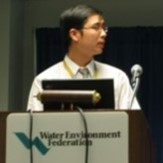Fate and Transport of Pollutants in Urban Water
A special issue of Water (ISSN 2073-4441). This special issue belongs to the section "Water Quality and Contamination".
Deadline for manuscript submissions: closed (20 September 2023) | Viewed by 1230
Special Issue Editors
Interests: water pollution control; water environment remediation; municipal engineering planning and design; ecological restoration; sponge city
Special Issues, Collections and Topics in MDPI journals
Interests: ecological restoration; biological treatment; algal-bacterial symbiotic wastewater treatment processes; sponge city
Special Issue Information
Dear Colleagues,
Continuous urbanization and industrialization have led to an increase in stormwater runoff, which has resulted in the discharge of heavy metals, nutrients, and organic chemicals. Transporting pollutants into water systems can harm both human health and aquatic species. Therefore, it is necessary to investigate the fate and transport of pollutants in urban water.
The purpose of this Topic “Fate and Transport of Pollutants in Urban Water” is to review the properties and transport and fate of pollutants in urban aquatic systems, list and discuss occurrence and treatment efficiencies, develop new ways to characterize mobile compounds by their basic properties, and provide a report of status and research needs on aquatic and multimedia models.
Papers are welcomed including, but not limited to, the following topics:
- Advancement in Fate and Transport of Pollutants in Urban Water;
- Urban Water System;
- Control strategies;
- Emerging Pollutants in Water;
- Physical-chemical Remediation;
- Microbial Remediation;
- Ecological Restoration;
- Emergency Restoration Method;
- Climate Change and Resource Recovery;
- Big Data Analytics and Modeling;
- Water Quality Monitoring.
In this field, research papers, reviews, and short communications will be accepted. Concerning original articles, only studies concerning the evaluation of environmental concentrations or, in general, with a high ecological impact will be considered. This topic will aim to collect articles to contribute to filling the knowledge gap relating to the fate and transport of pollutants in urban water.
Prof. Dr. Tianyin Huang
Prof. Dr. Xiaoyi Xu
Dr. Bingdang Wu
Guest Editors
Manuscript Submission Information
Manuscripts should be submitted online at www.mdpi.com by registering and logging in to this website. Once you are registered, click here to go to the submission form. Manuscripts can be submitted until the deadline. All submissions that pass pre-check are peer-reviewed. Accepted papers will be published continuously in the journal (as soon as accepted) and will be listed together on the special issue website. Research articles, review articles as well as short communications are invited. For planned papers, a title and short abstract (about 100 words) can be sent to the Editorial Office for announcement on this website.
Submitted manuscripts should not have been published previously, nor be under consideration for publication elsewhere (except conference proceedings papers). All manuscripts are thoroughly refereed through a single-blind peer-review process. A guide for authors and other relevant information for submission of manuscripts is available on the Instructions for Authors page. Water is an international peer-reviewed open access semimonthly journal published by MDPI.
Please visit the Instructions for Authors page before submitting a manuscript. The Article Processing Charge (APC) for publication in this open access journal is 2600 CHF (Swiss Francs). Submitted papers should be well formatted and use good English. Authors may use MDPI's English editing service prior to publication or during author revisions.
Keywords
- pollutants
- urban water
- remediation
- evaluation







